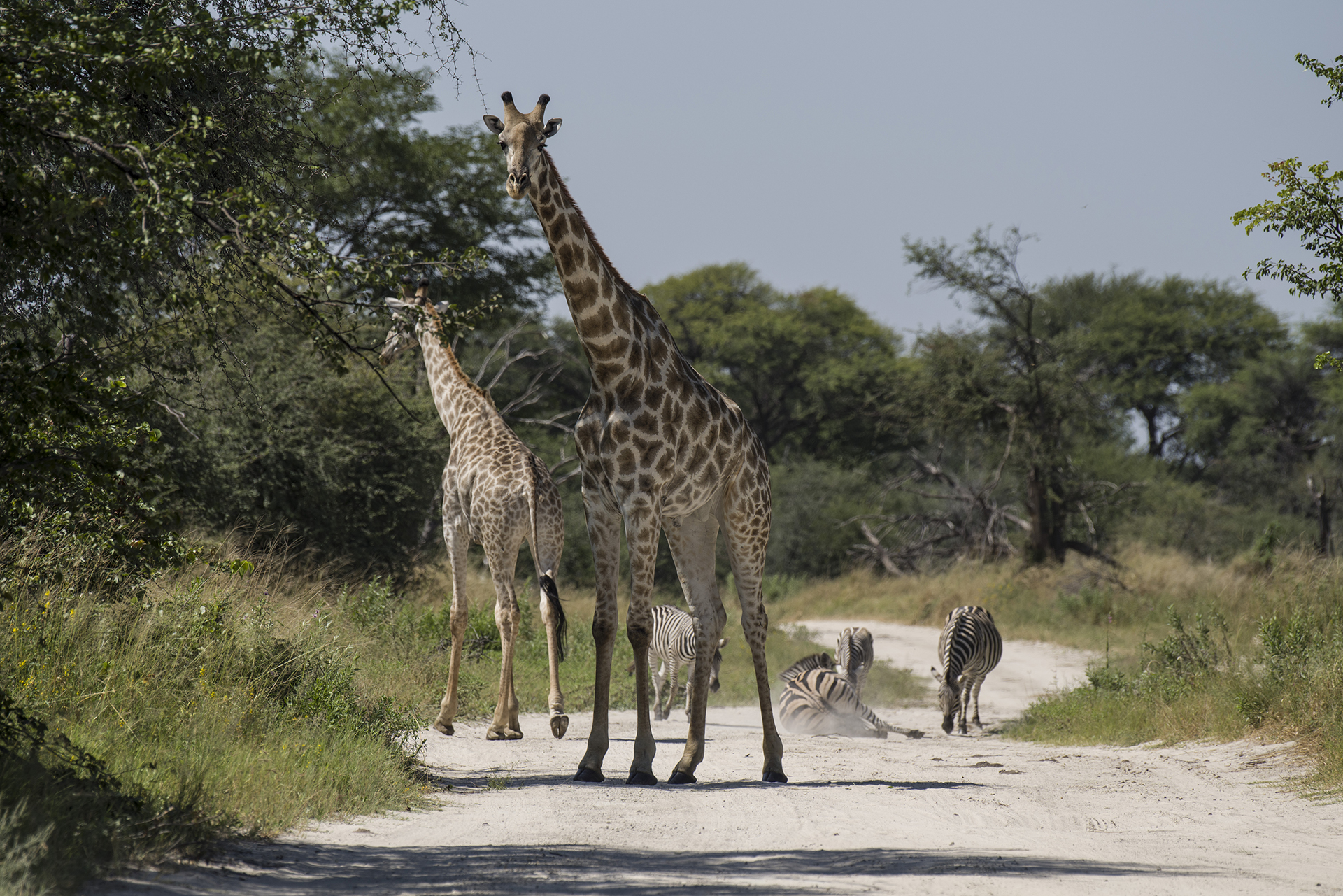
140 kilometers to civilisation
The next morning we make our way back at 7 am. We have a good 140 kilometres ahead of us before we reach civilisation again and we also have a lot on our todo list: Shopping, having tyres repaired and above all buying beer. This, of course, is at the top, underlined in bold and curled in red.
Already after a few kilometers we are lucky and spot some antelopes in the bushes and shortly afterwards again elephants, which unfortunately stand somewhat hidden in the bush. After that we find a lonely turtle crossing the road and afterwards we see nothing for a long, long time. That’s not what we had in mind.
Fortunately, however, we cross the water holes without further incidents and also pass „our“ mud hole in one piece. We are surprised, how much the tracks have already dried in 2 days. Now you can really see how deep we had buried ourselves here.
100 kilometres in the bush on the bumpy slope can be really very, very long. Especially when you can’t see anything but bush, bush and even more bush to the right and left. When we finally arrive back at the South Gate, we have already managed a good distance and decide for a short breakfast break at the trunk.
Of course, breakfast in the National Park is not possible without observers and new friends. So it doesn’t take long before a rather colourful and courageous bird dares to approach and longingly waits for something to finally fall off from breakfast for him. It takes exactly 3 minutes before hunger defeats the fear and he sits on the ground just one meter away from us and picks up the crumbs with relish.
From now on we are at least best friends and a little later he even picks the crumbs off Pierre’s finger. Must be pretty hungry. Then we continue on the bumpy road, but fortunately without waterholes. Apparently the safari god is still with us, because suddenly we see a whole herd of giraffes and zebras on the road, working the acacias or the grass along the way. When oncoming traffic arrives after a while, the driver startled the giraffes, who galloped off in a breakneck speed. What a stupid asshole! I would love to run after him with my middle finger outstretched and personally drive his car 3 meters deep into the mud.
Just one kilometer away we are lucky again and find giraffes, zebras and elephants all in one pile. When Pierre puts on an emergency brake, we almost cause an accident, because the truck with the huge water canister on the loading area behind us probably did not expect at all that a tourist brakes for animals. It’s probably never happened in a national park before. Let me put it this way, we just needed a car accident on our list.
We can enjoy the view for quite a while. The zebras clearly assume the role of watchdog on the ground. A whole herd stands at a safe distance and watches us with their ears up. Meanwhile, the giraffes have the situation under control from a bird’s eye view and the elephants don’t give a damn about us. After all, they are stronger than our safari vehicle in any case and could turn us into a scrap heap in seconds if they wanted to. Apparently we are not a great threat, because under the watchful eyes of the giraffe, the zebras roll pleasurably on the dusty road. After all the animals have crossed the road and moved a bit further, we also set off again.
Shortly before Maun we leave the gravel road and have to increase our air pressure again for the asphalt. We stop briefly at the roadside and get to work. Of course, it doesn’t take long before we are surrounded by lots of spectators. A farmer who asks us for a few Pula and starts a conversation with us in half English, half Sezwana (the main language here).
We learn that he is a Christian and that there are many small churches here. Besides, he is not only a farmer but also a pastor and if we stay there for a while, then he will surely think of many more jobs that he does. A short time later a few children join us and stand at the tree a bit intimidated and watch us. The farmer confirms: They like white ones.
When we arrive at our guest house in Maun in the early afternoon, I am very relieved that we will spend the next two nights in a clean room with bed and white sheets. The bed is so soft in comparison to the hard camping mattresses that you directly believe you would lie on clouds.
After we organize a Mokorro tour for the next day we drive to the tyre dealer to fix our broken tyre. With balancing and repair we pay 3 Euro! This should be told to a cutthroat workshop in Germany.
Then the important things are on the agenda: buying beer and of course we have learned from the mistakes of the past and carry a total of 9 six packs from the liquor shop. We also get mosquito cream for my 300 or so mosquito bites. No shit, those beasts maltreated me so badly that my ass looks like it’s part of the Sunday bee sting cace on the coffee table. And this although I only wore long trousers. The mosquitoes here have a completely different quality and anti mosquito repellents leave them completely cold. Well, what did I expect, normally their snout goes through elephant skin, what should a European trousers matter to them?
Next: Mokorro, can I eat it?







